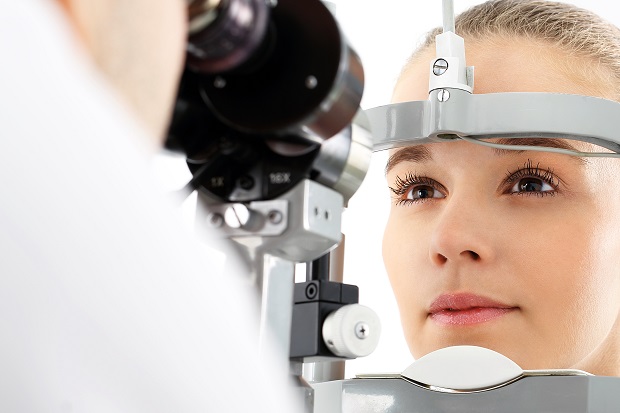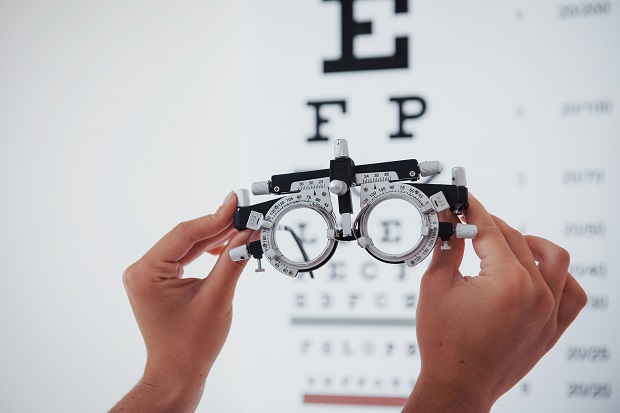
Are Glasses and Contact Prescriptions the Same?
Glasses and contact prescriptions are not the same. Here’s why:
- Glasses and contact prescriptions are not the same because the power changes slightly between prescriptions.
- Contact lens prescriptions require several measurements that glasses do not.
Jump Ahead
- Contact Lens Prescriptions versus Eyeglass Prescriptions
- How Do Contact Lens and EyeGlass Prescriptions Differ?
- Why Do Eyeglasses and Contacts Prescriptions Differ?
- Expert Opinion
- Glossary of Terms
- Resources
Contact Lens Prescriptions versus Eyeglass Prescriptions

Both prescriptions will include power measurements to correct myopia (nearsightedness) or hyperopia (farsightedness). Measured in diopters, myopia will appear on a prescription as negative and hyperopia as positive numbers. The numbers run between -10 and +10 and will dictate the power of the prescription. The vision requires more correction in relation to their distance from zero. The right eye, designated as OD in a prescription, may have one power, while the left eye, designated as OS in a prescription, may have another.
The cylinder can be found in both prescriptions as the measurement for correcting astigmatism. The axis may be present along with the cylinder to denote the location of astigmatism.
“Add” is another measurement that may be found in both prescriptions. “Add” is the additional magnifying power for bifocals.
How Do Contact Lens and Eyeglass Prescriptions Differ?

Measurements called the base curve and diameter are necessary only to contact lenses because they sit directly on the eyeball. The diameter dictates how big the lens will be, while the base curve measures the curvature of your cornea.
These measurements are critical because a lens that is too tight or does not fit properly can severely damage your eyes. This is why those who wear decorative lenses still require a contact lens prescription, even if they have perfect vision.
Why Do Eyeglasses and Contacts Prescriptions Differ?

Other parts of the prescription may change as well as the necessary additional measurements required for a correct fit with contact lenses. Because contact lenses sit directly on the eyeball, whereas eyeglasses sit about 12 mm away, a slight modification in the prescription’s power is necessary. The higher the prescription, the greater the difference between a prescription for glasses and one for contact lenses.
Expert Opinion

“The numbers on the glasses prescription and contact lens prescription may look very different, especially if you have a big prescription. This is simply due to optical mathematics.”
Contact Lenses Casey Eye Institute, Oregon Health & Science University
Glossary of Terms

Astigmatism: a defect of an optical system (as a lens) causing rays from a point to fail to meet in a focal point resulting in a blurred and imperfect vision.
Merriam Webster Dictionary
Diopter: a unit of refractive power equal to the reciprocal of the focal length (in meters) of a given lens.
Oxford Dictionary
Farsightedness: able to see clearly only objects that are not close.
Cambridge Dictionary
OD: abbreviation for Latin oculus dexter, meaning right eye.
Just Eyewear
OS: abbreviation for Latin oculus sinister, meaning left eye.
Just Eyewear
Nearsightedness: someone who is nearsighted cannot see objects clearly when they are far away.
Cambridge Dictionary
Resources
- Contactlenses.org – Is Your Contact Lens Prescription the Same as Your Eyeglasses Rx?
- WebMD – How to Read Your Eyeglass Prescription
- Vision Direct – How to Read Your Contact Lens Prescription
- FDA – Decorative Contact Lenses: Know the Risks
DISCLAIMER: THIS WEBSITE DOES NOT PROVIDE MEDICAL ADVICE
The information, including but not limited to text, graphics, images, and other material on this website, is for informational purposes only. No material on this site is intended to be a substitute for professional medical advice, diagnosis, or treatment. Always seek the advice of your physician or other qualified healthcare providers with any questions you may have regarding a medical condition or treatment before undertaking a new healthcare regimen, and never disregard professional medical advice or delay in seeking it because of something you have read on this or any other website.





